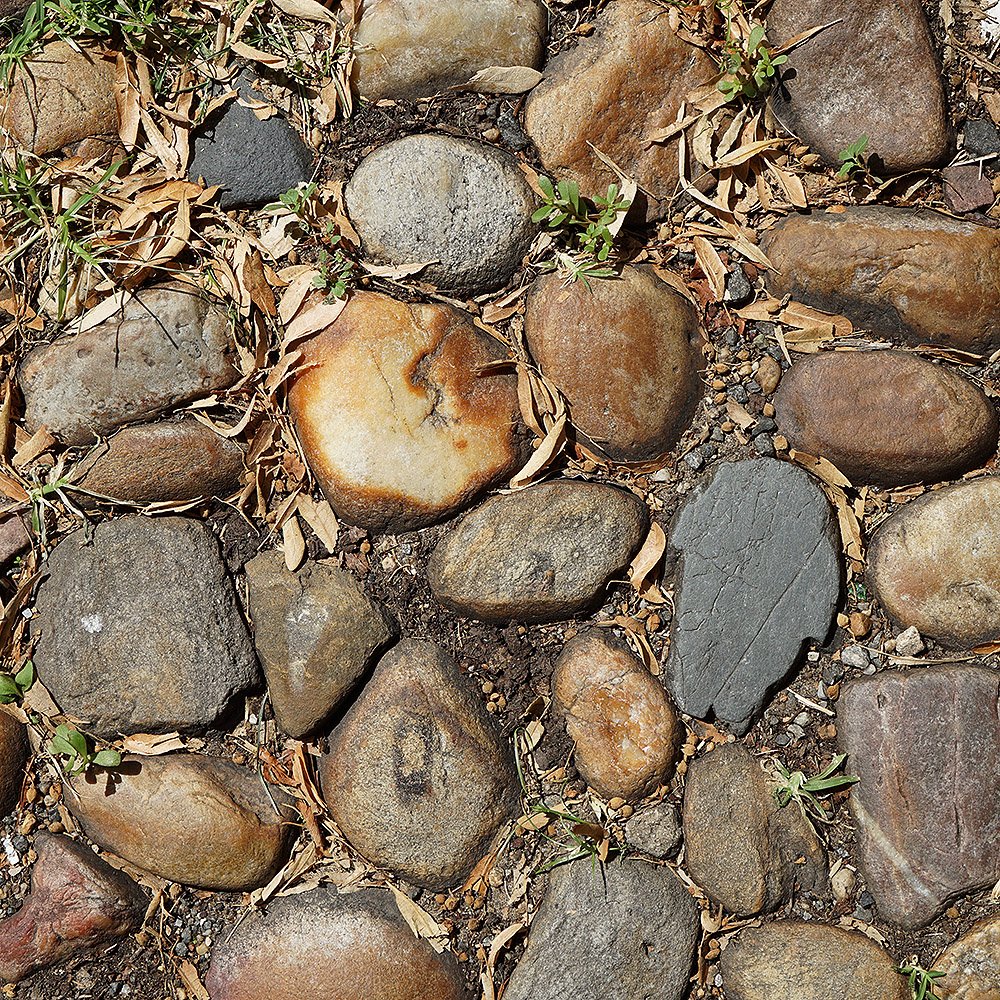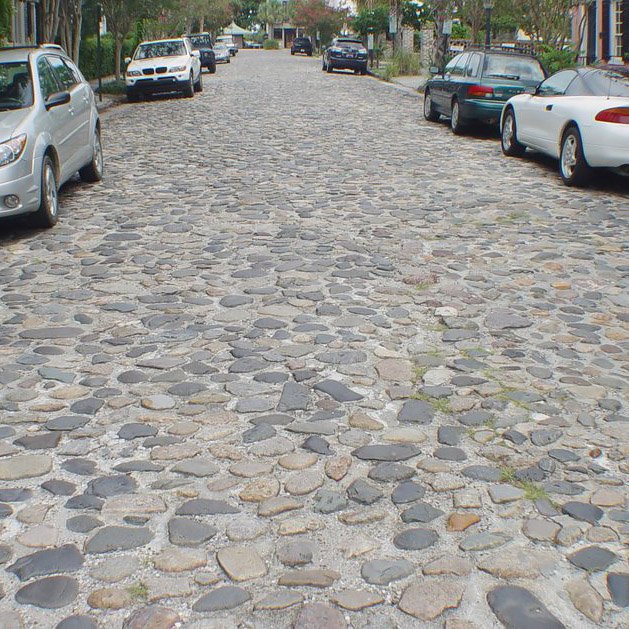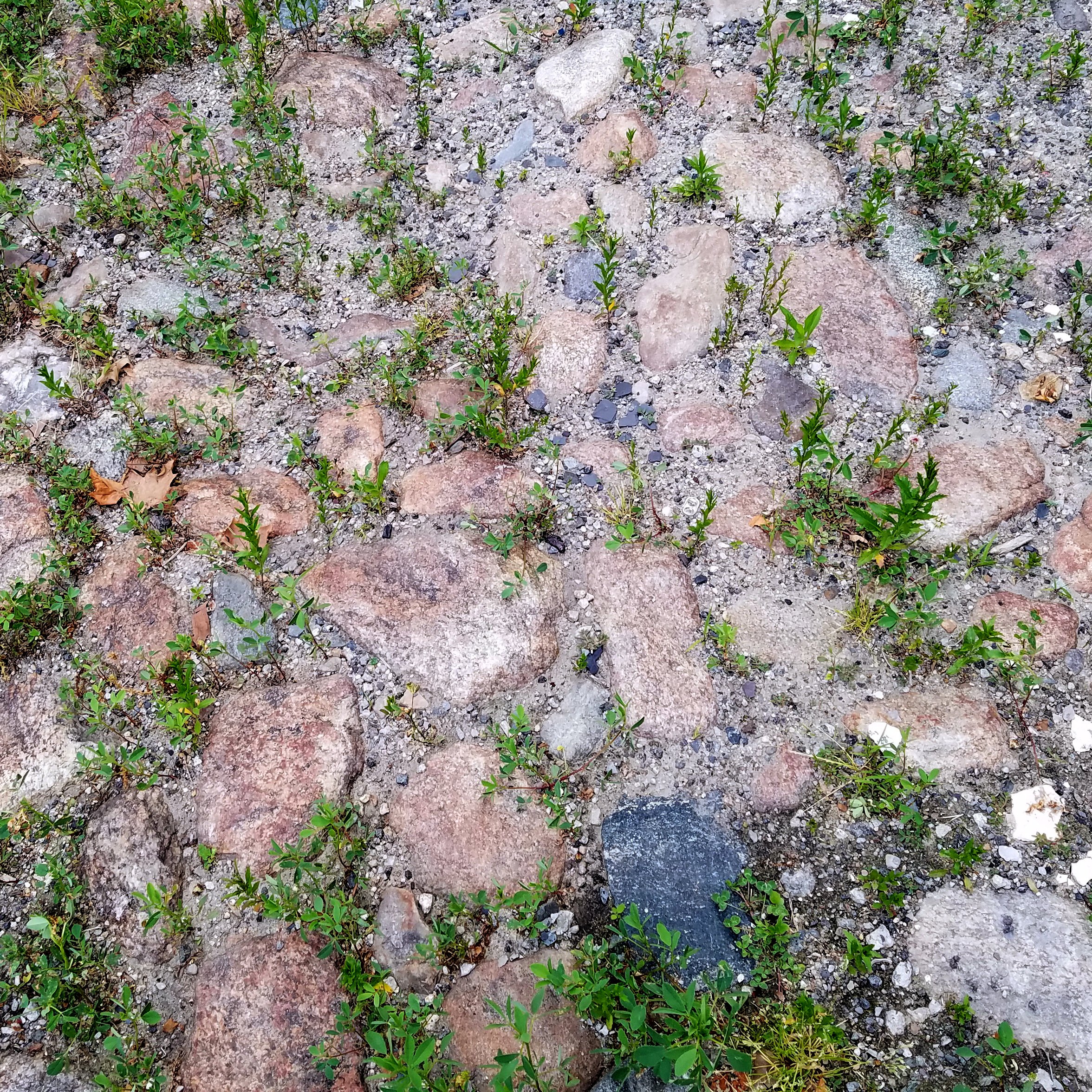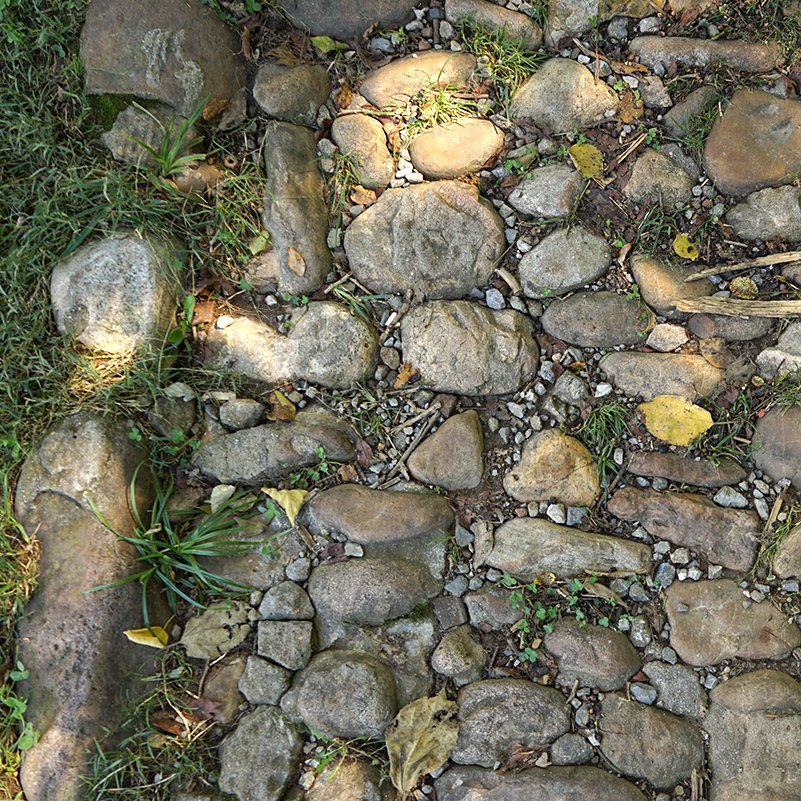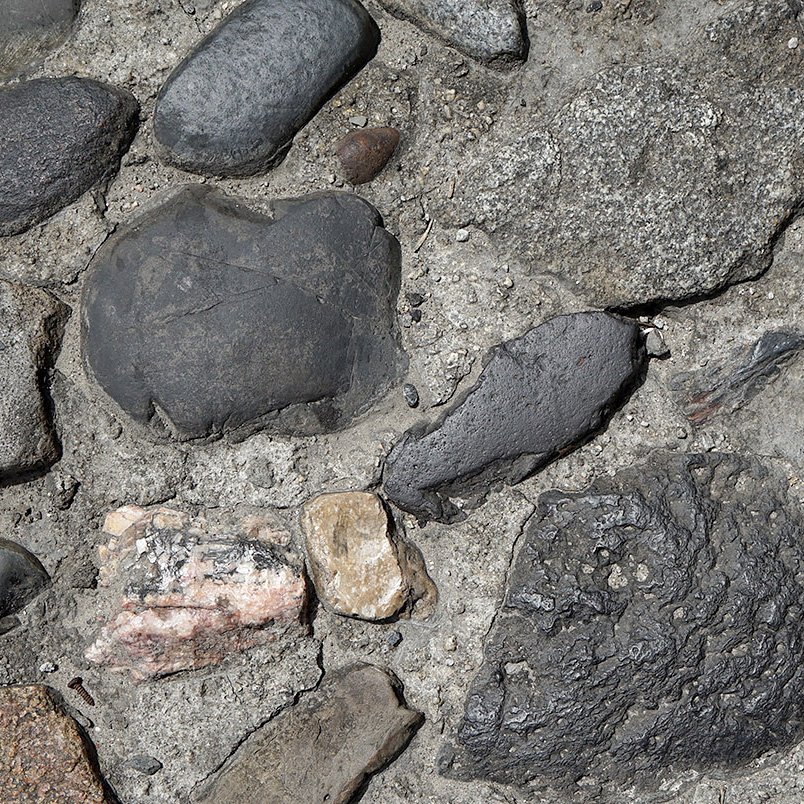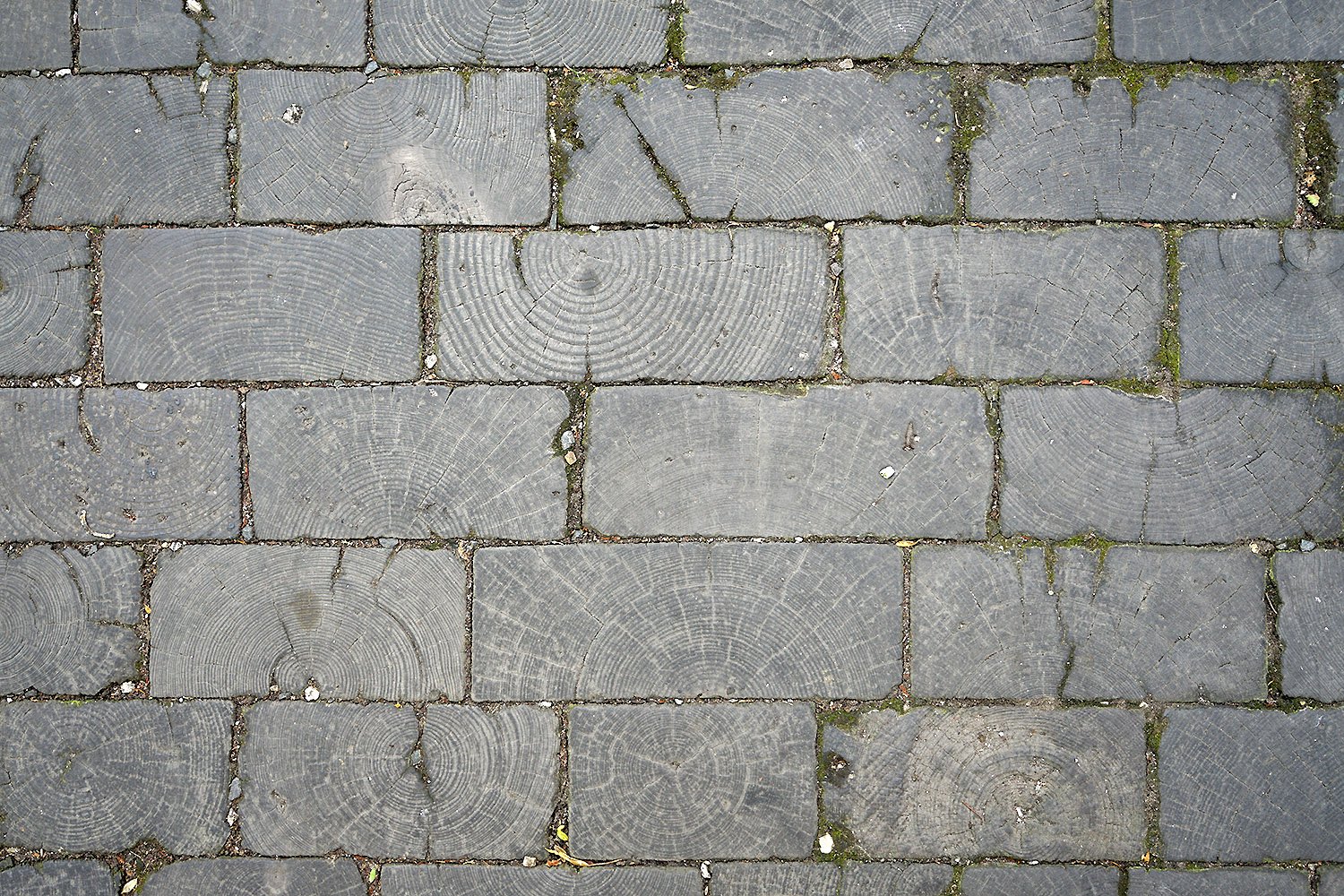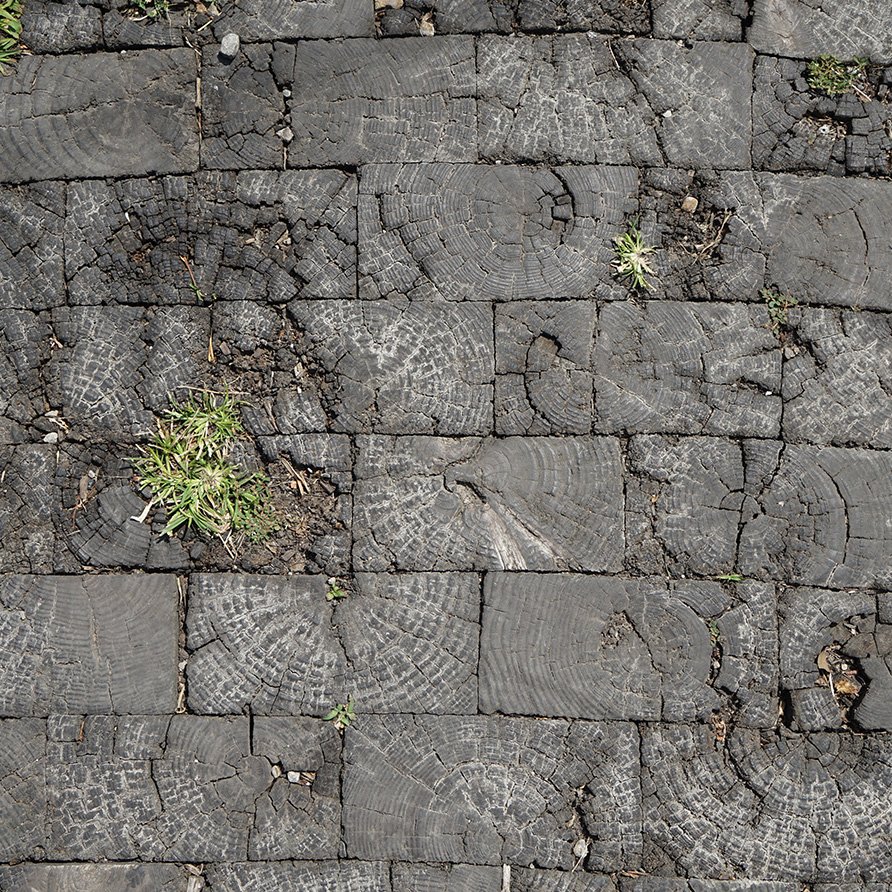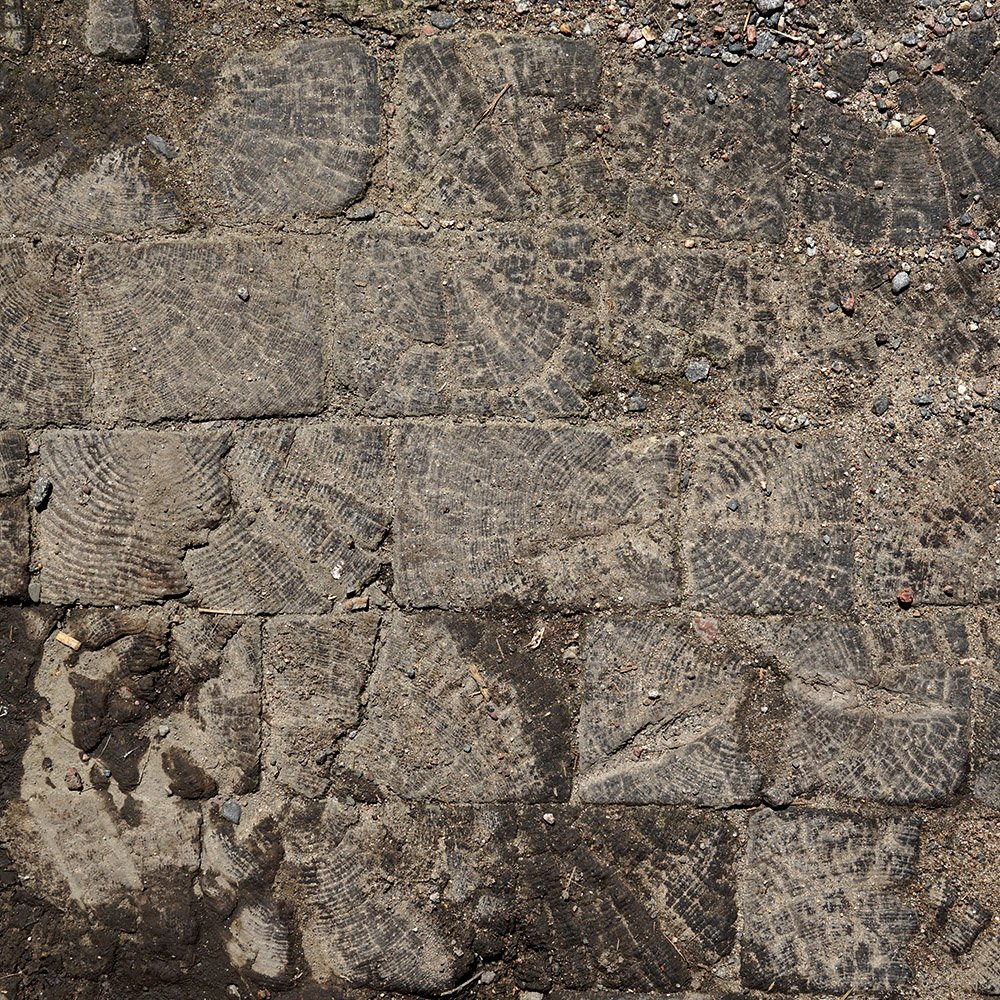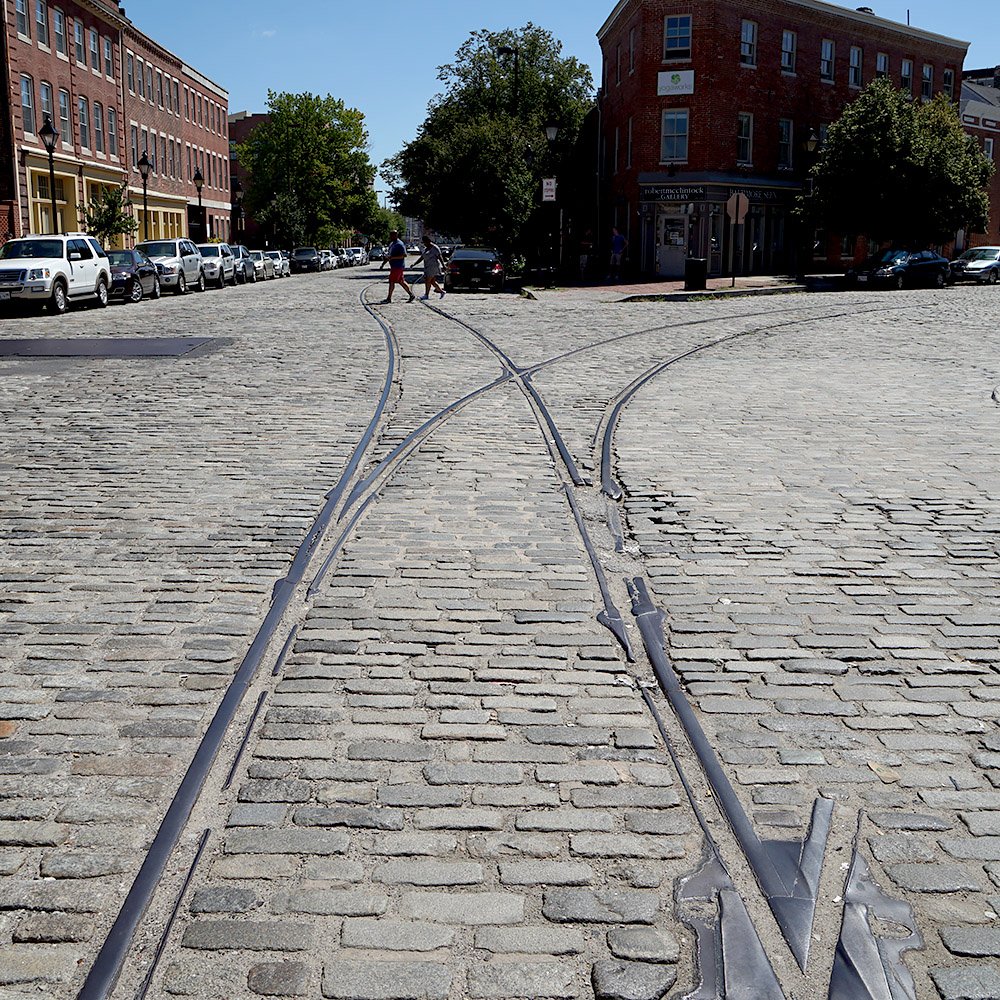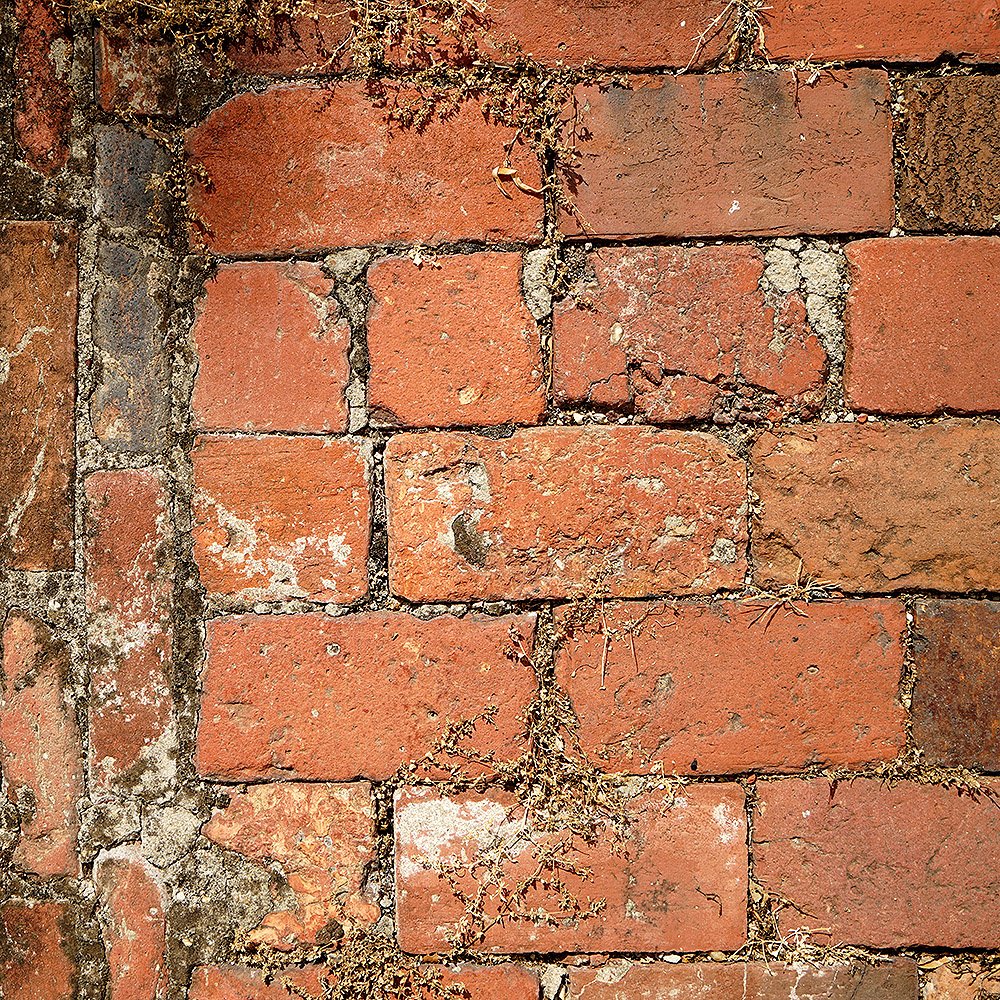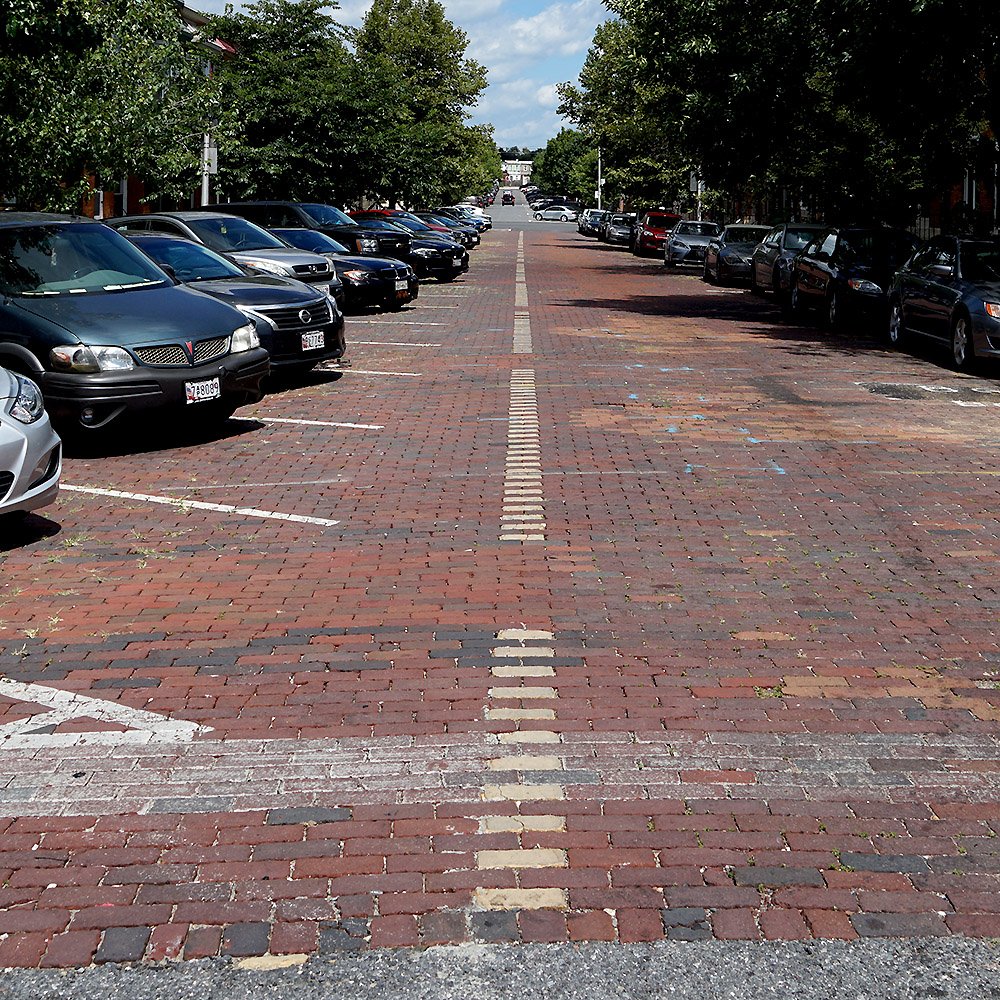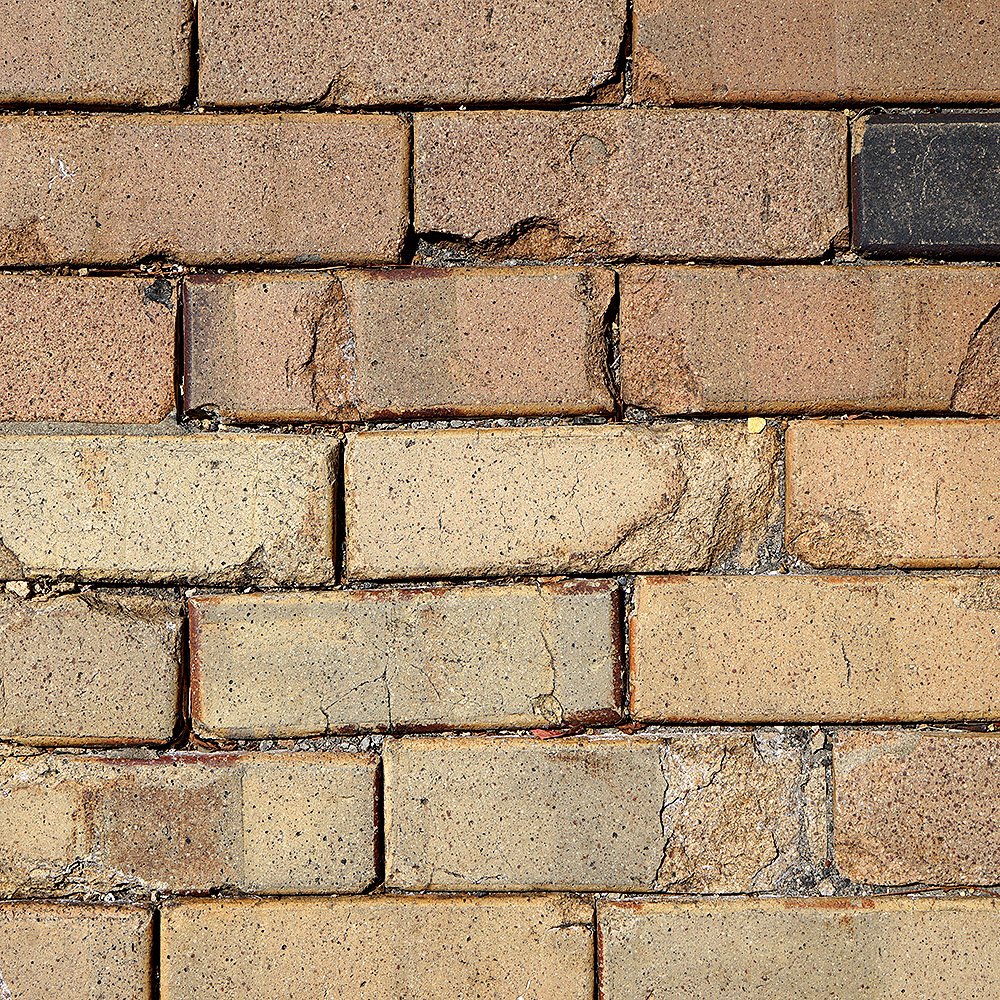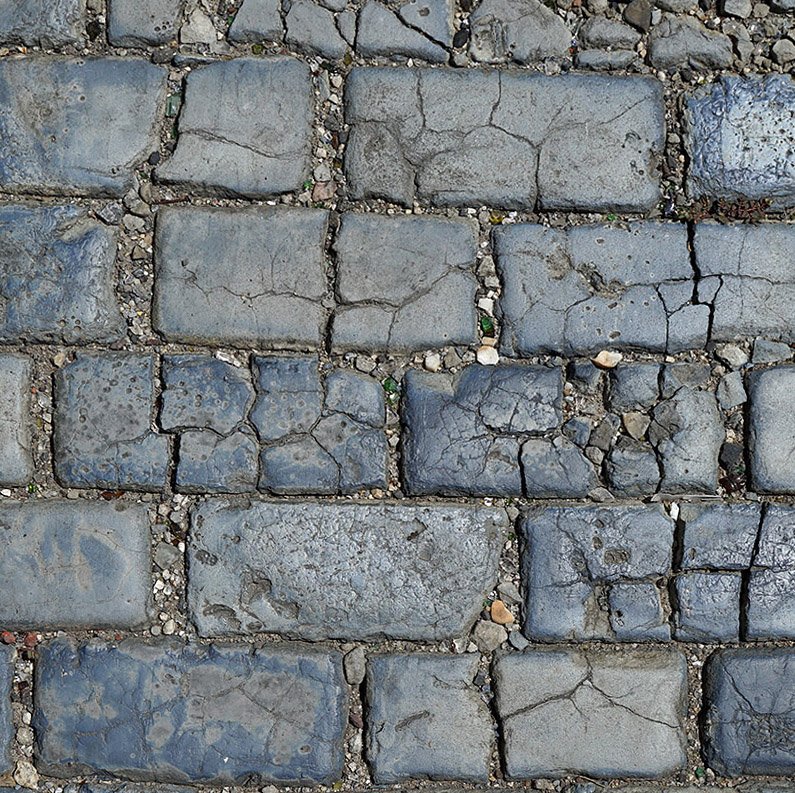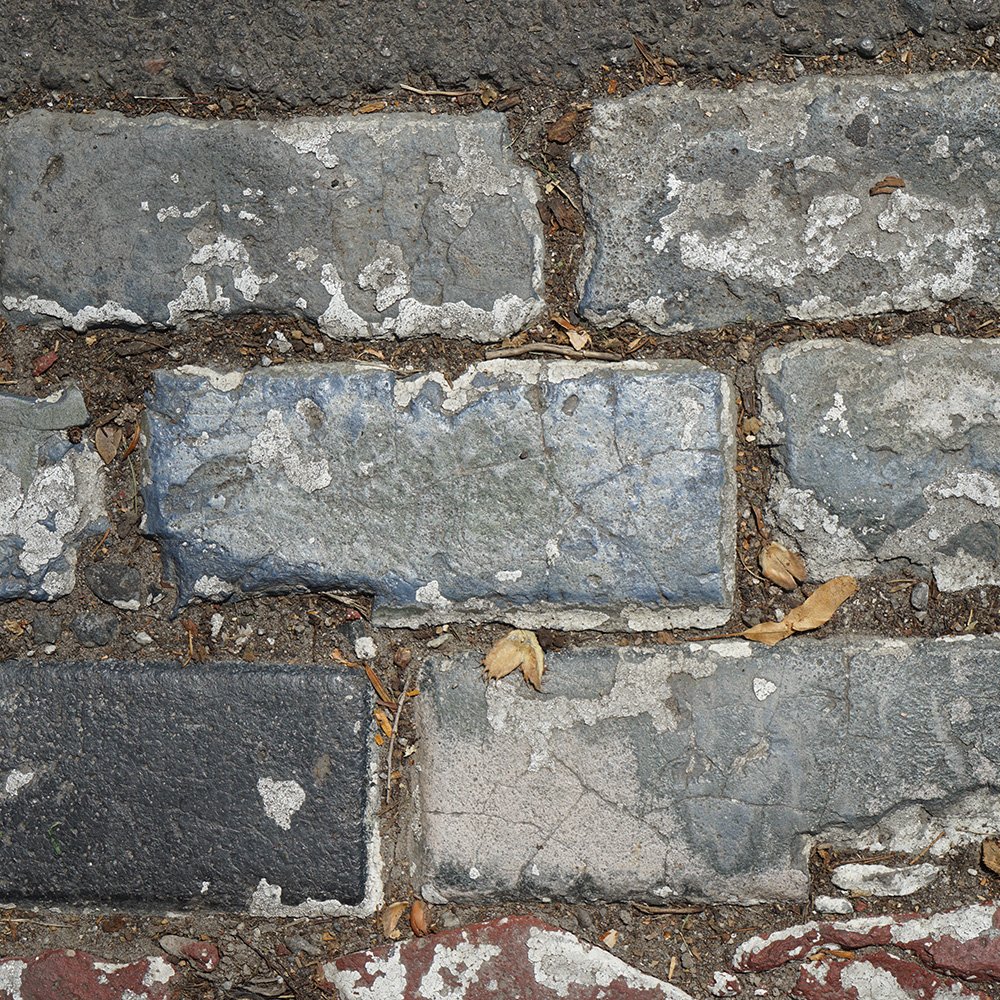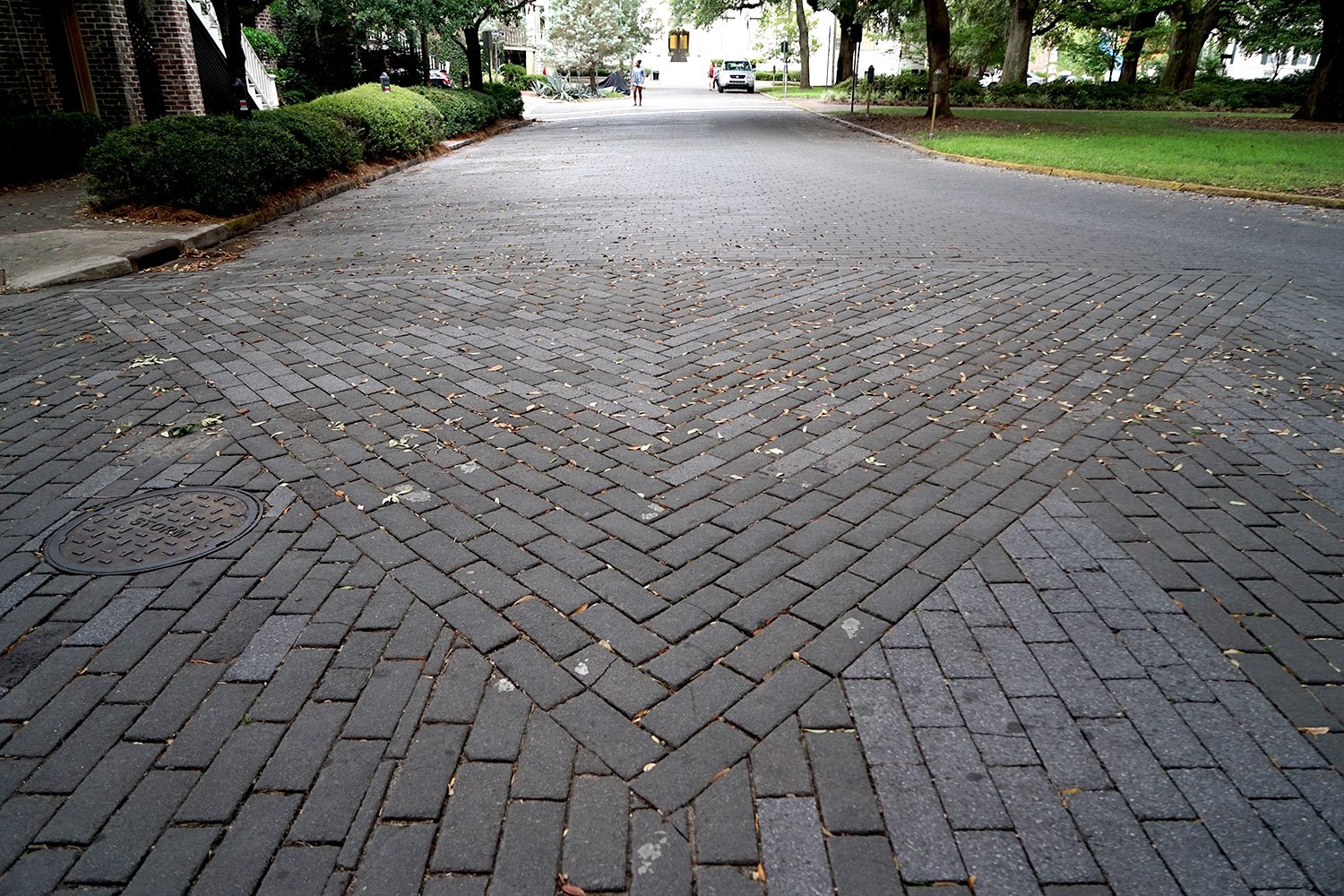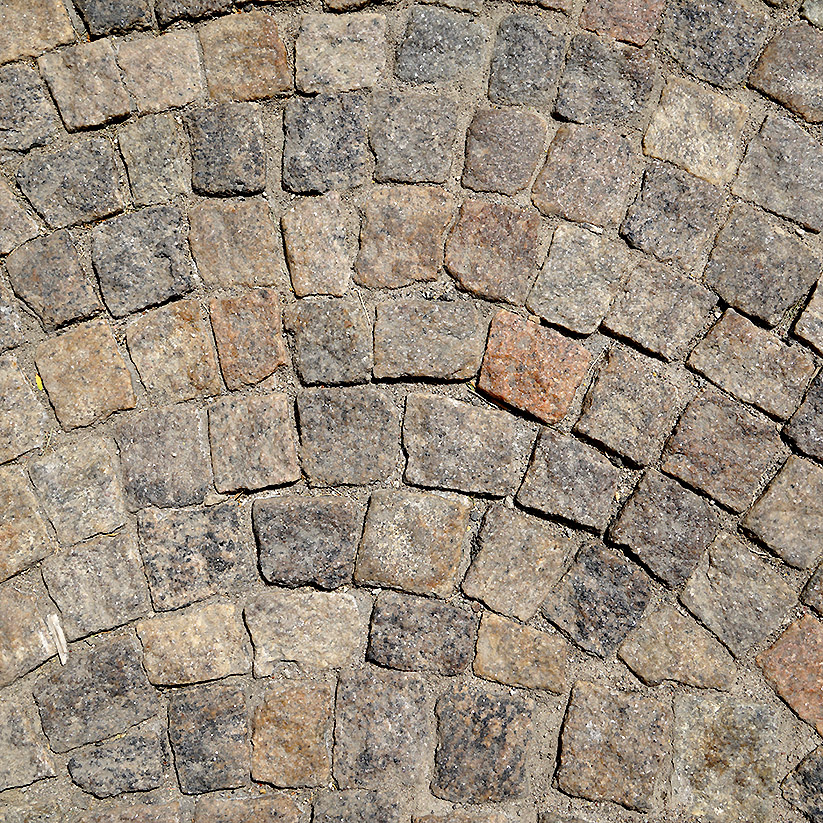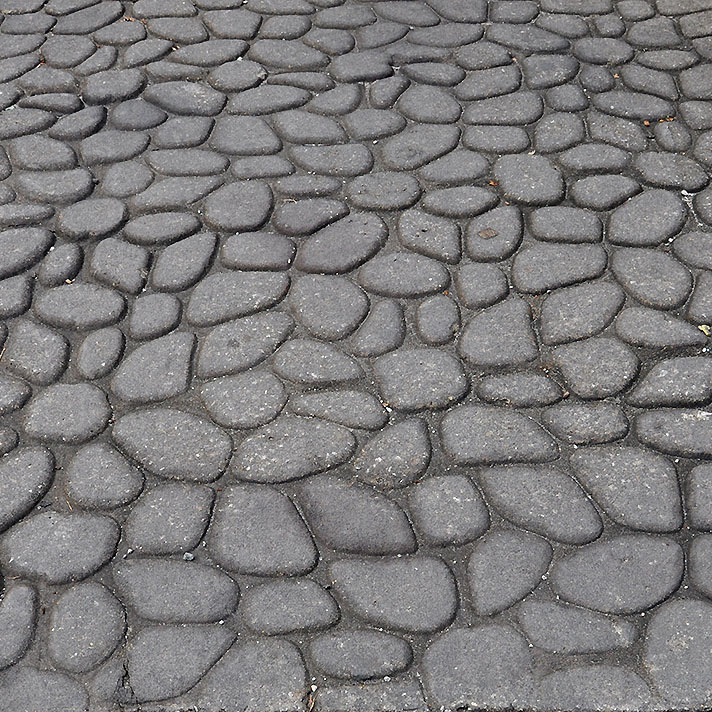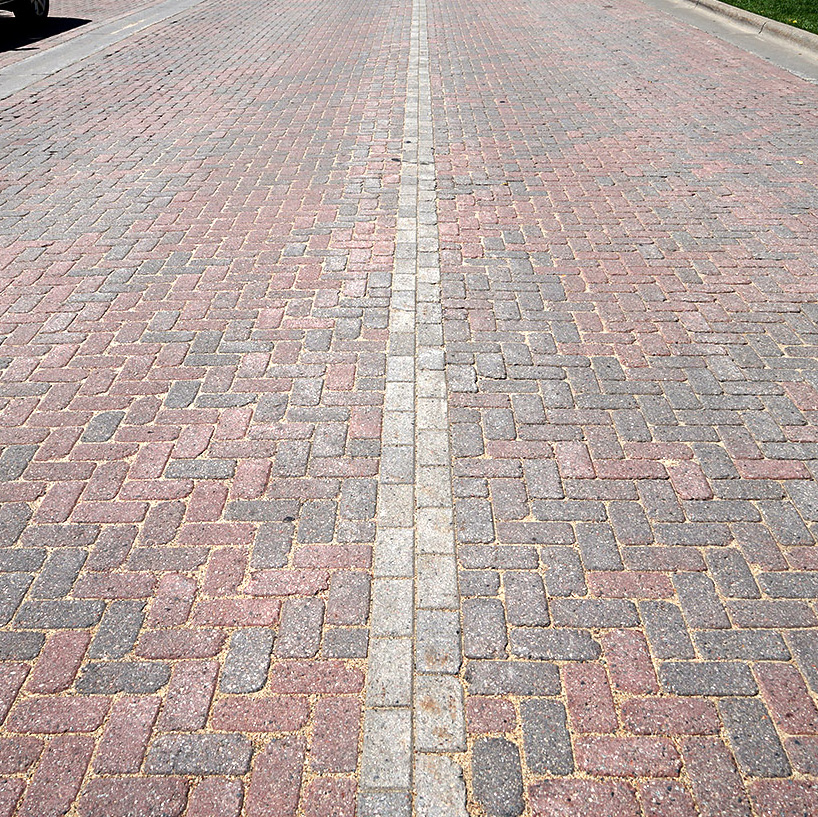STREET PAVEMENTS
Cobblestones
Cobblestones are naturally rounded field stones. They were either harvested from nearby waterways or in port cities were acquired as discarded ship ballast left on a wharf. First used in America in the 18th century, it was often the first permanent type of pavement used by cities, especially on the east coast. Its rough texture provided good footing for horses, but provided a bumpy ride for wheeled vehicles. By the mid-19th century enthusiasm for it began to decline. William Gillespie, a professor of civil engineering at Union College in Schenectady, New York, criticized this type of pavement in his 1847 manual as a “common but very inferior pavement which disgraces the streets of nearly all our cities.”
WOOD BLOCKS
Samuel Nicolson patented his wood block pavement in 1854 and later published The Nicolson Pavement, Invented by Samuel Nicolson, of Boston, Mass. (Boston: Henry W. Dutton & Son, 1859).
belgian blocks - granite, Sandstone and limestone
Belgian blocks or setts are a form of quarried stone pavement, typically rectangular in shape, six to twelve inches in length and half that dimension wide. A Belgian block is defined by its shape, rather than its material, which is most often granite, but could also be limestone or sandstone. They also vary in terms of the smoothness of their surface, ranging from very slick and almost glassy to very rough. Making their appearance in North American cities during the second half of the 19th century, Belgian blocks were used on streets bearing traffic with the heaviest loads.
Vitrified brickS - Red (includes orange, purple and black variants)
By 1900, vitrified bricks had become the most common type of street pavement. A vitrified brick is fired at a higher temperature and for a longer period of time than a conventional brick used in construction or those used for sidewalks, making it harder and impervious to the absorption of water. Vitrified bricks were first used for paving in the United States in Charleston, West Virginia, in 1870. Hundreds of brick manufacturing companies appeared around the country, usually stamping or molding their company name and sometimes their location onto one face of the brick, which was oriented away from the surface and not visible upon installation. The high cost of shipping bricks limited their distribution and encouraged the emergence of brick manufacturing plants around the country or limiting their use in certain areas of the country. Ohio likely had more brick manufacturers than any other state. Columbus, Ohio, and St. Petersburg, Florida, have more surviving brick streets than any other cities in the country.
vitrified bricks - Yellow
IRON SLAG / SCORIA BLOCKS
ASPHALT BLOCKS
Asphalt blocks are larger than typical vitrified bricks, normally 12 inches long, 6 inches wide and 2 inches thick. Very few cities retain such blocks, with Richmond, Virginia, and Savannah, Georgia, preserving the largest extents of this type of pavement.
